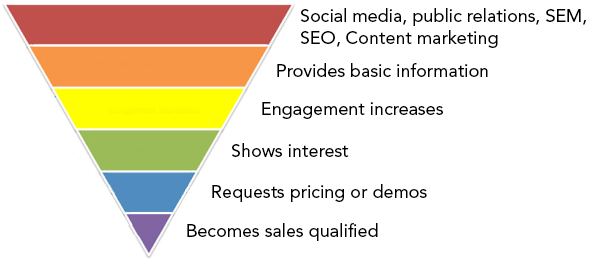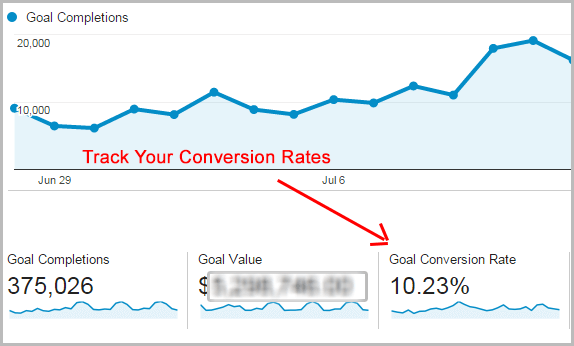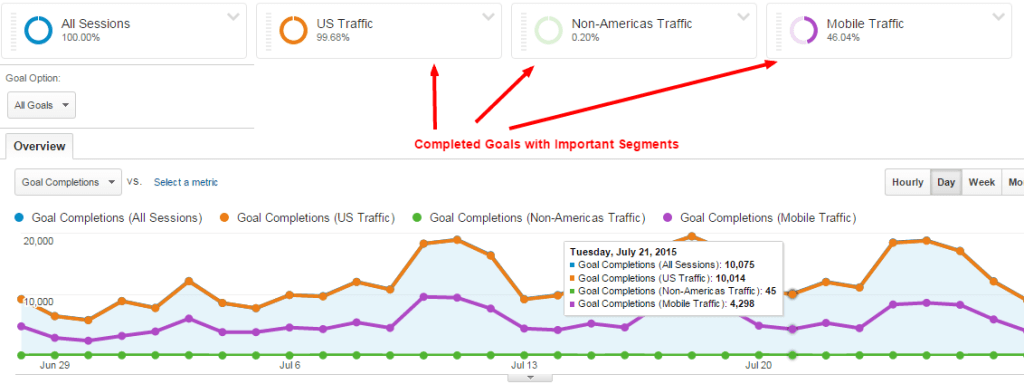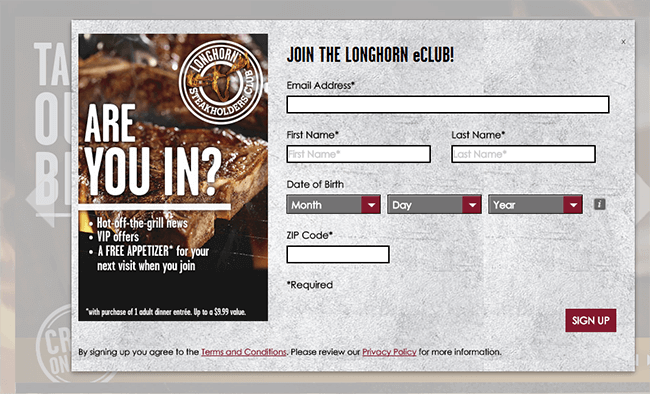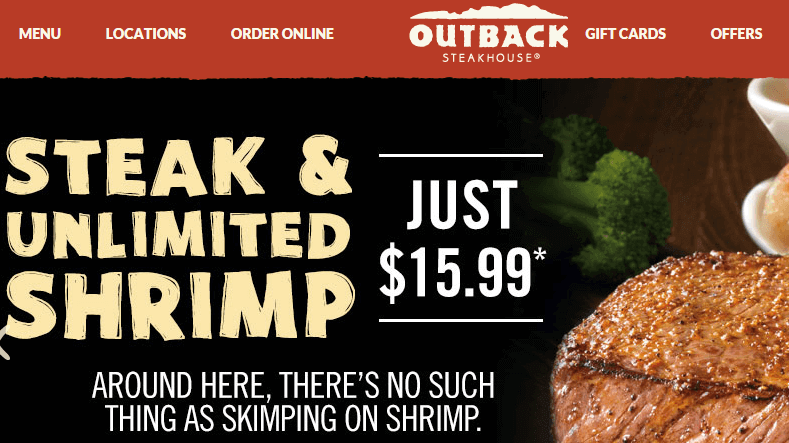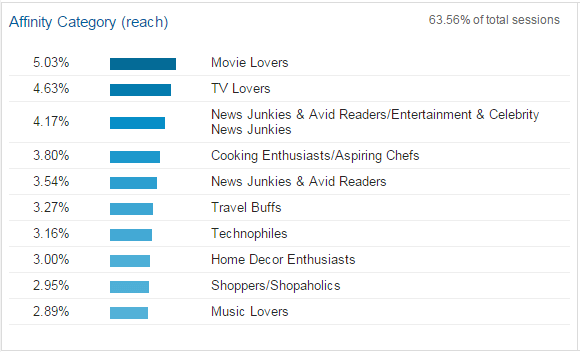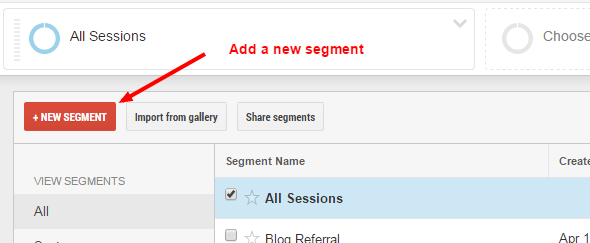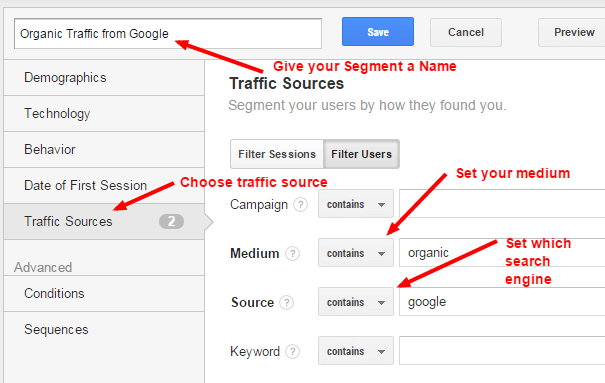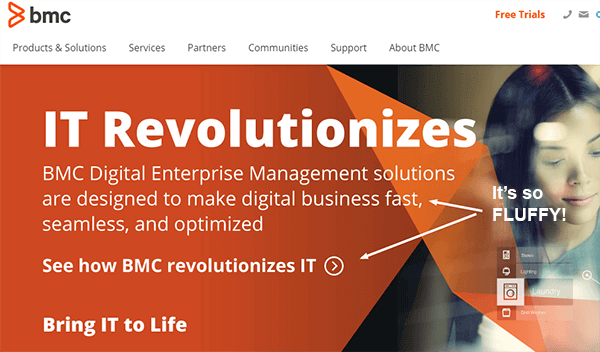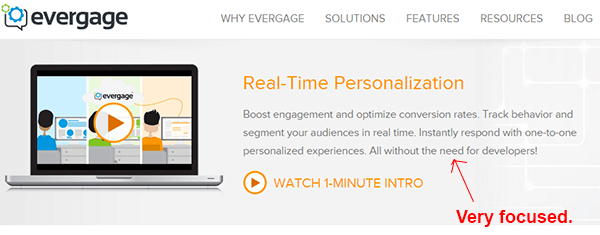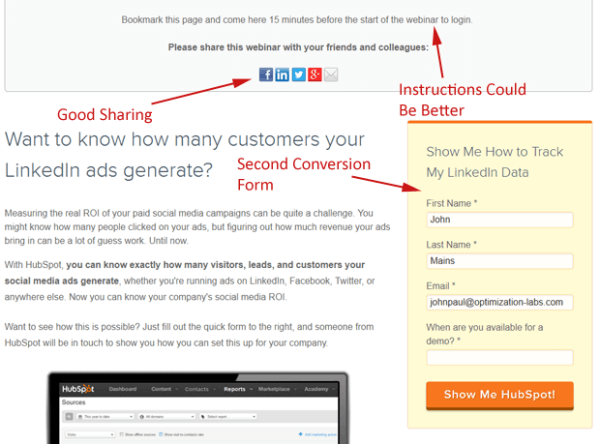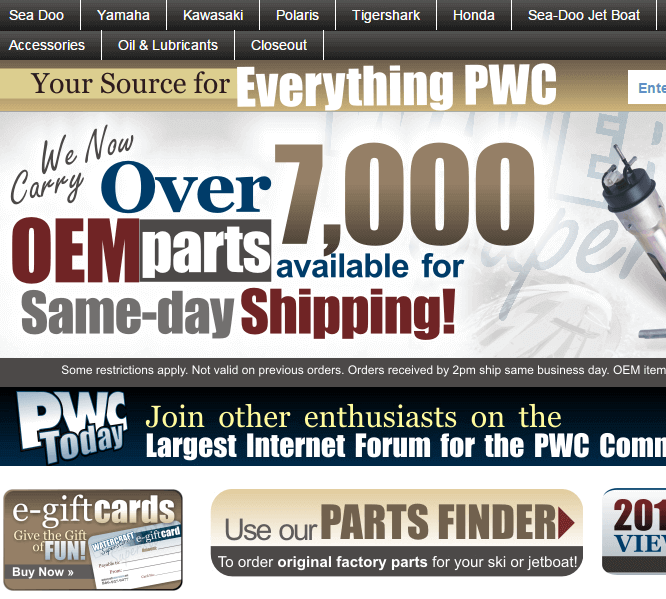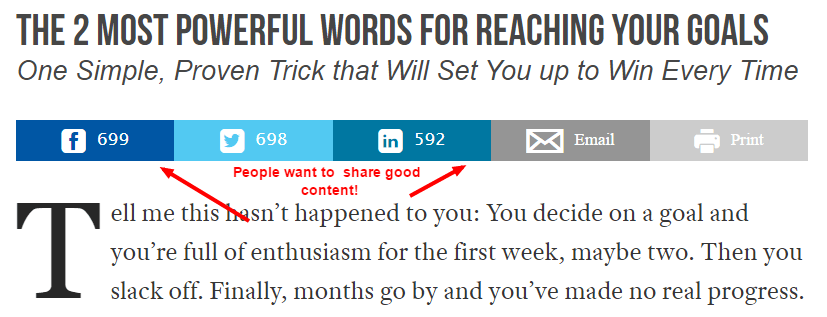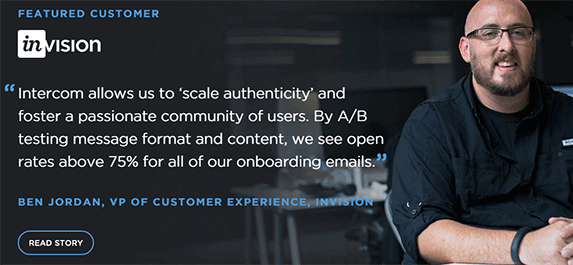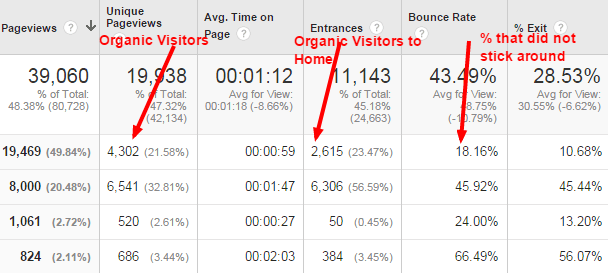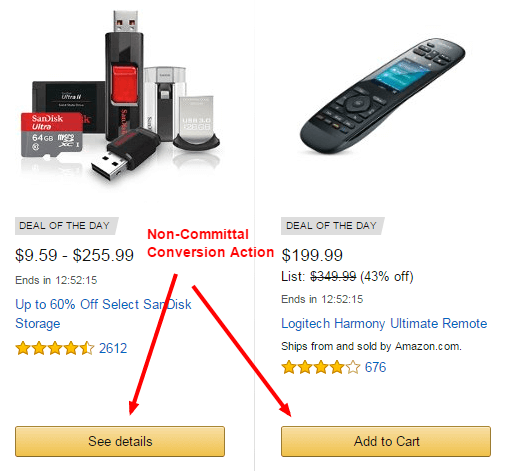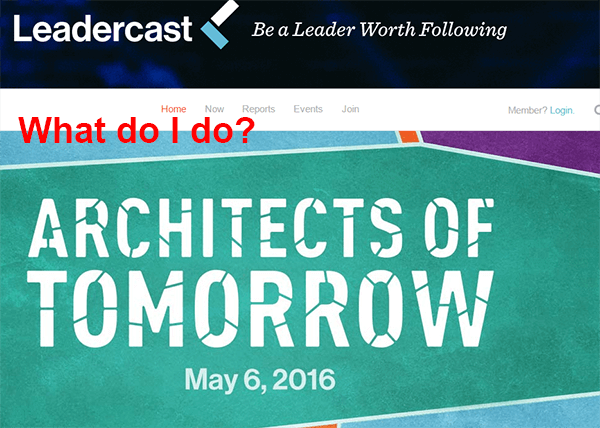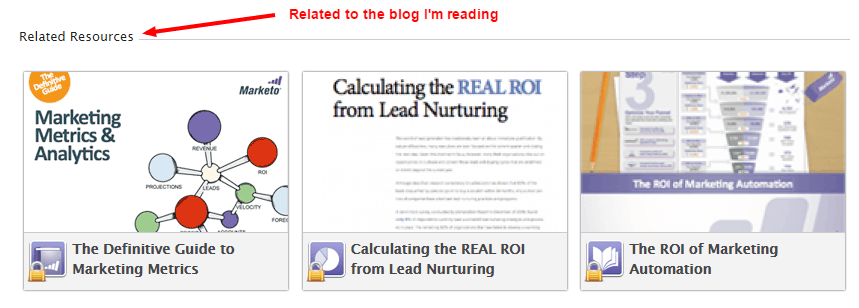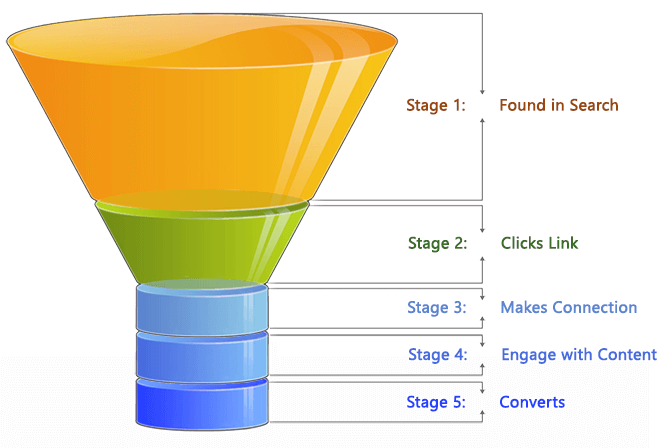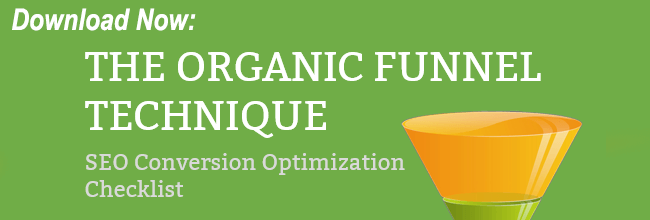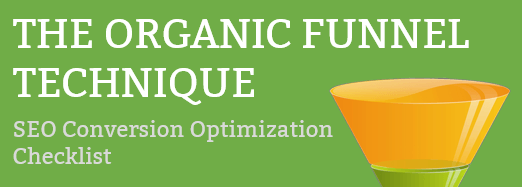
Today, I’m going to talk about combining two of my favorite topics, SEO and conversion optimization, to drive more online sales.
We all know that simply building a website isn’t enough.
You have to drive traffic to your site and ranking well in search engines is a big part of the traffic puzzle.
But even if you do achieve those coveted top ten Google rankings using the best cutting-edge content marketing techniques, converting that organic traffic into customers, not just consumers of your content, is tough.
You can get thousands of visitors a day to your site, but if you don’t convert those visitors into paying customers, your business isn’t benefiting much at all.
I’m going to show you a technique that pretty much guarantees (it’s worked every time I’ve done it over the last 10 years) you’ll increase conversion rates for your organic Google traffic.
Free Bonus:
Download a free checklist that will show you how to quickly leverage these strategies.
Now let’s get started.
The Organic Funnel Technique: SEO Conversion Optimization
How can you increase your conversion rates for organic search engine visitors and, therefore, increase your profits?
Marketing funnels are great at visualizing the steps that prospects take to become customers, but it isn’t a perfect explanation for what really happens.
This basic marketing funnel below shows a typical B2B process to becoming a sales-qualified lead.
I’m going to describe the steps to improving both your SEO tactics and conversion optimization to drive significant gains in your conversion rates.
There are 4 basic steps to the Organic Funnel Technique that increase conversion rates for your organic visitor traffic.
Step 1: Understand the unique needs of your visitors from search engines.
Step 2: Give them the content they came for AND solve their problem.
Step 3: Test visitor interactions and behaviors.
Step 4: Constantly evolve and repeat previous steps.
Step 4 doesn’t sound like much of a step, but you can’t skip it, otherwise, you may have won a battle in the first three steps but will lose the war.
There is an endless amount of knowledge you can gain from your customers when you pay attention to what they do and how they do it.
If you don’t know where to find your conversion rate, first you have to track goals in Google Analytics (or whatever you use to track web analytics). You can then see your overall goal and conversion rates in the Google Analytics Goals Overview.
Here is a good analogy of why the Organic Funnel Technique for conversion optimization technique works so well for organic traffic.
Have you ever walked into that clothing store at a mall thinking you might find the perfect jeans, you then spent about 20 minutes walking around each display, pulling out random items, yet you walk out empty-handed.
Of course, we all have (well, those of us who like a good pair of jeans, but you get the idea).
You walked into the store because they sold jeans, but you found nothing you liked, so you walked back out.
Getting people into your website has its own difficulties but if you’re good at SEO, you’ve solved that problem.
Getting that hard-earned organic traffic to actually convert can be maddening if you aren’t watching how this specific audience interacts with your website and its content.
We Want More Customers!
By simply having more traffic, generally, you will have more people buying and converting, but how much more could you have if you really knew what was going on?
If you boosted online sales by even 2%, what would that mean financially?
I’ve seen it impact a $10M online retailer with an additional $120k a year in just one month by simply understanding how their organic traffic responded to their site and they made appropriate adjustments.
For a small company, that extra revenue adds up pretty fast and builds upon itself.
Step 1: Know Your Visitors
Who, What, When, Where
To be effective at increasing conversions from organic search traffic, you need to know as much about organic visitors as possible.
Why is this important?
Being able to segment visitor traffic and provide the most relevant content that meets their need is the key to getting people to convert.
Let’s say you are a digital marketer for a well-known steak restaurant chain.
Your Texas website visitors are probably going to respond differently to that steak content landing page than someone from California.
The California visitor may want something less heavy at lunchtime than at dinnertime. I know I typically do.
If they searched on a lunchtime salad and came to your homepage where you are showing a great big juicy steak, how will that change their opinion of wanting to order online or make a reservation?
You have to know your audience.
When you can tailor content to visitor’ needs, at their time of need, your conversion rates will skyrocket.
Let’s take another look at steak and assume you were looking for a great place to have steak for lunch and simply searched “steak lunch”.
You would expect to be able to go to a website and see a steak, but if the website throws hurdles in your way like Longhorn Steakhouse does with its email signup, you are probably going to click away pretty quickly when there are only a few seconds to capture your attention.
Unless committed, visitors don’t have time for a form.
Get out of their way unless you are bringing considerable value to interrupting their experience.
Outback’s website comes closer in that it doesn’t get in the way of the steak I am searching for in the first place.
At Outback’s site, a visitor is much more likely to commit to taking action since they got what they wanted in the first place.
Learn the Motivations of Your Customers
Now that we know the basics, let’s understand why people are coming to your website.
What do they want to find and what need are they trying to solve?
Many people visit a website with a “me” perspective.
A visitor is probably going to be focused on “what do you have to offer me and solve my need?”
But, most company websites are aligned with the goal of “What can I say or show to get more customers?”
Optimizely is a great platform for testing designs, but if you aren’t up to speed on digital marketing trends, their homepage is more focused on what they do, not the problem the customer has.
While this approach is natural to a business, it’s also the wrong way to communicate with prospects, especially when dealing with organic visitors who don’t know your brand.
Instead, look at your website from the point of view of your customer and create a customer buying journey map.
A customer buying journey map simply shows the journey, or path they take to solve their problem using your website or apps starting from their first interaction.
You have to be able to clearly understand this journey to create scenarios that create value for them and enable them to want to convert.
This brings us back to the need to know your audience intimately.
So you want to know your audience? Social Media is Awesome for that
Unless you have a big marketing budget to afford visitor demographic studies and analysis tools, social media can be a big help in understanding your audience.
As we all know, Facebook, X, Instagram, and all those other social media sites are absolutely vital to bringing traffic to your website (probably up to 30% or more for a well-oiled marketing team taking social conversations seriously).
You don’t want to ignore social media when it comes to understanding who your visitors and buyers are.
Social media visitors tend to be quite a bit more engaged with your content than organic visitors, but it will give you a good understanding of your higher-quality visitors.
Use their social profiles to help you create personas for different types of buyers to help you create segments for:
- Who is visiting,
- What they want,
- When they want it,
- Where they live, work and play.
Remember, improving conversion rates for organic traffic means knowing the details of your audience.
Knowing the keywords they used to visit your site is useful, but not technically practical (or feasible in a live setting).
There is so much more you can know about visitors, especially for repeat visitors or those that fill out forms.
And the great thing about social media is that you get to engage with them one on one if they allow it.
Interacting with your visitors
The most powerful use of social media is that you get to know your customers and they get to know you.
It has a great boost in attracting people and indirectly improving SEO (through influencers who like to talk about your stuff).
Fortunately, social media isn’t the only place you can learn about your visitors.
Your website is a great place to learn about your visitors when you directly engage with them.
Google Analytics has a wealth of information about your visitors in their Demographic reports.
Of course, you don’t want to interrupt transactions and conversions, but make it an option for the visitor to take if they choose.
I like using online chat, surveys, and blog comments to learn about site visitors. Using techniques like Exit Overlays, you can sometimes capture people as they are about to exit a site to learn what they were looking for and why they were leaving.
Don’t be obnoxious or a creepy stalker from the marketing team.
I know what we can and can’t do with visitor data and it is just downright scary what a truly enabled digital marketer can actually know. Don’t be creepy.
We are even seeing apps and devices these days become more personal and engaging in real-time. People are embracing individualized help such as what we are seeing through the Amazon Kindle.
Use interactions to enhance what you know about your visitors.
Don’t Know What Visitors Want? Just Ask!
There’s no harm in asking questions such as “Are you interested in this product” or “Was this review helpful?”
Google provides free tools such as Google Survey or if you want something better, use something like Survey Monkey. You might be surprised how many people are willing to give you their two cents.
You can even ask visitors their reason for visiting your website using an Exit Overlay to try and keep people around or learn why they are leaving if they didn’t engage.
While some may not answer, some will, and you can use that data to better determine why people come to your site.
Just don’t be annoying about it.
Have Measurable Actions
Having a visitor simply land on your site isn’t exactly the best measurable action of interest.
It doesn’t really tell you what they’re interested in or why they’re on your site.
Look for places to include measurable actions and events such as reading a group of similar pages, listening to a sound clip, reading a blog entry to the end, watching a video (and for how long), checking out your pricing, or reading an excerpt from a book.
Even things like clicking to read more reviews or to see more product details is a measurable action that can help determine where you need to focus your conversion optimization.
Visitors from search engines will often click away pretty fast if they don’t know what to do, so make sure the conversion action that you want to measure is really, really obvious.
Restaurants are usually very good about doing this since their goal is almost exclusively to get you into one of their locations.
In this screenshot of Carrabbas.com, you see the obvious conversion action (CTA) where they measure not just the total number of clicks but they segment that into many different characteristics including geolocation, referring source, time of day and more.
Tracking click events like this does not come built-in with a popular web analytics tool and must be set up manually.
If you’re interested in learning how to track things like how many people click on your conversion actions so that you can better track web goals, read this article on setting up tracking Google Tag Manager V2 to get started.
Measure Your Goals AND Interactions
Are you measuring and segmenting your conversions from search engine traffic?
If not, how are you going to know what changes are improving your SEO conversion rates and what isn’t?
Without measuring conversion rates for organic traffic, you’re just guessing at what works.
Tracking goals/conversions/sales is pretty easy to do with any of your typical web analytics tools.
Segment your traffic, if you haven’t already, so that you know how organic traffic from Google, Bing, Yahoo and wherever else is converting.
Let’s run through an example on doing this in Google Analytics real quick so that you can track organic traffic by search engine for all of your reports by setting up a Segment. (I’m assuming you have goals setup already).
The default view in Google Analytics is to show activity for everything, so first, lets click on Add Segment.
Now let’s create a new one.
Now add the parameters for your segment. Note: Don’t worry about the Source and Medium being accurate as Google will prompt you with available values for the biggies (Google, Yahoo, Bing).
Save this segment and you’ll now be able to filter all of your organic traffic just from Google.
Woohoo! Now we can see what organic visitors from Google search are doing and how well they are converting.
This should show you how effective traffic from these segments is performing so you can do something about it.
But simply tracking conversions isn’t enough.
You need to track every click and create funnels to that goal, for your organic traffic, to know what it is doing, where it is failing and where it is succeeding.
Gahhh! So what does a visitor want?!
Hopefully you are at least on the way to gaining an understanding to that question, so let’s focus on Step 2 and give them what they came for while learning how to capture that elusive conversion.
Step 2: Give Them What They Want
Why do you visit and stay on any given website?
You go because you think they have something you want (a product, some advice, entertainment, or information).
But you stay around more than a few seconds only if they actually do have what you want.
Marketing fluff doesn’t help any one, so stop publishing all of those brochures about how cool your product is and give people what they want.
Big B2B product companies, like BMC, are notorious about making it about themselves rather than their visitors.
People make snap decisions about websites all the time, but if they don’t immediately see what they’re looking for, they’ll click off the page.
It’s your job to nail what they are looking for and communicate that quickly.
So, what Types of Content Work for Your Audience?
Studies by conversion optimization experts have shown that SEO conversion rates increase when you have different content types and content structures on a website.
Not surprising that different people want the same thing, just presented in different ways.
One person wants just the highlights and facts to make a decision.
Another person wants all the details.
Yet another person wants cute graphs and images with kittens and unicorns that explain everything visually.
People process images thousands of times faster than they do text.
You’ll want to include appropriate images wherever possible, and be sure you include titles and alt tags for them.
A site that’s nothing but high level marketing fluff will have very low conversion rates, while a website with the same text that has images, apps, social shares, videos, and blogs mixed in that they can interact with, will convert much better.
The content you create needs to be high quality, helpful information, not simply text stuffed full of keywords you hope will rank in Google.
Content Needs to have a Purpose
Many people create one call to action for their entire website – buy stuff, sign up for a newsletter, or just rely on the good old Contact Us form.
The homepage of Evergage has a very focused message geared toward their audience needs and a conversion action that doesn’t require the visitor to give up a lot of personal information.
Content should always have a purpose that aligns your goals with the goals of your site visitor.
Content should entertain or educate your audience, but when you are selling a product or service, it should be part of the funnel you use to get people closer to solving their problem by taking an action.
That action may be buying a part to fix their jet ski, or clicking to listen to that podcast episode that teaches you how to manage your money.
All content needs to be created with a laser-focused purpose in mind.
Hubspot generally does a great job of showing relevant next steps with their content and landing pages.
Hubspot is very good about giving the visitor what they came for and often gives something extra to create happy customers.
Give the visitor more than what they came for and they’ll be a fan such as a fully engaged thank you page.
Fans are the best customers.
You want as many fans as you can get so work to try and convert even non-customers into your fans.
Be Consistent with Design for the Best Conversions
Your content isn’t the only thing that is important.
When you’re designing content layout, you need to think of it as a branded publication.
When did you last pick up a magazine and see different fonts, font size, and colors on every article?
Even though web pages aren’t viewed side by side, fonts and style still need to be consistently formatted and well thought out in order to maintain your brand.
A good example of inconsistent design is this online store for jet ski parts (over 6 different fonts with 7 different font treatments).
This scattered brand design doesn’t drive visitors to any particular place and the eye just doesn’t know what to do with all of the conflicting eye candy.
Visitors are more likely to become customers if your site looks like you take your brand and your website seriously.
Let Visitors Interact with the Content
When someone visits a page on your site from search results, they should immediately see the clear hints that the page is relevant to the reason they clicked on your link.
Prevent visitors from bouncing by putting your main content and teasers as close to the top as possible to increase the likelihood that they will want to explore more.
Now that we’ve kept them from bouncing away immediately, how do we keep them interested?
Visitors, especially the younger generations of users, are accustomed to interacting and sharing digitally.
Youth interact more digitally with content and each other than they do in real life face-to-face.
Millennial consumers are worth $1 trillion annually in the US and $10 trillion globally in 2015 according to Mobile Youth.
Being able to comment and leave messages, share your stuff socially, chat with real time support, ask questions and even contribute, makes your site much more valuable to a visitor.
As seen in the screenshot below, sharing happens when you have useful information.
If sharing your content makes them look good, you will in turn benefit as well.
When they can interact with your content, it increases the SEO value through links back to your content (Google likes links from quality sites to your website).
Remove the friction and roadblocks you have to visitor and customer interactions so that your content has the freedom to grow beyond your own digital properties.
This will drive more visitors and ultimately, more conversions.
Be Believable
Remember that most non-brand organic visitors probably are not very familiar with your company.
Testimonials and reviews are great at improving conversion rates because they help create trust.
Intercom.io creates software for connecting with customers and they have a great footer that has a full image of a customer and a relevant testimonial to prove their primary message.
Many people won’t buy a product unless there are a few honest reviews from other customers.
The keyword here is “honest”.
You don’t want to fake reviews or take down negative ones. Customers need to know they can trust the reviews on your website.
Step 3: Testing Interactions and Behavior
Now that we know who our visitors are in our Organic Funnel Technique, and we have given them some great content to solve their need, let’s turn them into customers.
Get Your Visitors to “Stick”
“Sticking”, in conversion optimization terms, means a visitor has remained on the site for more than a few seconds and eventually takes some kind of action.
Once your visitor has bought into the fact that you might have what they are looking for with your awesome headline to read more or interacted in the way you want (your buyer journey map) they will begin inching toward that coveted point where they become sales qualified.
Let’s look at three steps to get people to become sales qualified leads.
1. Don’t make visitors think (or work too hard)
If we have given them the content they want, we have achieved the visitor’s initial goal of finding help for their need, but probably have not solved the problem they came to the site to solve.
You have to lead them to their solution and make it really obvious how to get there.
If you want more organic conversions, don’t make your visitors think and simplify the experience.
SBT.com, a leading jetski parts company with lots of monthly visitors, especially in the summer, has thousands of products in its catalog but they are organized just like their print catalog.
They recognized the need to simplify how people find products and streamlined the search experience and shopping cart to get shoppers (especially regulars) what they want faster.
Then they improved their product descriptions and the HTML structure which impacted their organic rankings.
This combination of improvements to content and UX drove a YOY growth in transactions for organic visitors that had a great boost to their ecommerce conversion rate.
Most of your non-brand organic visitors probably have not heard of your company and you don’t have a history with them (they definitely aren’t fans yet).
These types of organic visitors have no brand loyalty and won’t stick around if they can’t find a way to solve their need.
Assuming they stick around, you’ve got to remove friction so they can take a conversion action.
Friction is anything that’s preventing a visitor from converting into a customer.
On your website, friction can be errors, slow loading times, a disorganized page, unclear navigation, or non-obvious calls to action.
The stats below show organic visitors to the homepage. The entrances show how many people landed here straight from search results.
They have an 18% bounce rate, which is pretty good for a homepage.
If your bounce rate for organic visitors entering the page is low, you’re doing a good job.
You want to reduce friction wherever possible at each step so converting is quick and easy.
I’ll say it again because it is so important:
If you want your organic visitors to convert, don’t make them think too hard.
2. Ask for Smaller Commitments
How you word conversion actions has a huge impact on your conversion rates for organic traffic or any other traffic.
Asking someone to “Buy Now” is much different from simply saying “Add to Cart.”
One means spending money, and the other is simply an action to save something you like.
In e-commerce, it is common knowledge that the more visitors you get to actually add an item to the cart, the more likely they are to actually make a purchase.
Typically, visitors are going to be more hesitant to “Buy Now” than they are to simply put an item in their online shopping cart.
Amazon figured this out long ago as they do heavy testing on their incoming traffic.
The wording “Buy Now” is too “committal” for many people and they don’t realize the wording is even affecting their decision making process.
You will find that organic traffic tends to be a little bit more gun-shy on converting than a lot of other direct traffic, especially new visitors, because they are unfamiliar and may not trust your site yet (so be gentle).
Of course, things like this should always be tested to find out what wording works best, but you get the idea.
You should only present the right customers, the right conversion action, the right way, at the right time.
Small things like this make a surprising difference in customer purchase and conversion rates.
3. Make your Call to Action Obvious
Whether it is purchasing a product, downloading a whitepaper or signing up for a webinar, your conversion action needs to be really obvious.
No one should leave a website wondering what the point of it was.
Leadercast.com is a large organization that puts on big events teaching people how to be better leaders, but when I visit the website, I am presented with the screenshot below.
Why is there is no conversion action here for me to take? Sure, it is there, but it gives no hint of what to do or why I should care about something almost a year away (at the time this was published).
If I stick around long enough, I find out the main banner is a slider and there are other conversion actions to take, but none related to the first banner.
As a visitor, I’m already lost in the first few seconds of visiting the Leadercast website.
Let’s take a look at a company that does this stuff for a living: Marketo.
When I am reading their blog posts, I’m not thinking about converting, but learning some new insight about marketing automation, but at the end of every blog post, they have resources for me to download with some REALLY helpful information that is related to the blog post.
Each one of these items requires I at least give them my email, but because it further helps solve my problem, I’m OK with it.
The call to action in this case wasn’t even a button, but simply a list of resources relevant to what I was reading at the time.
If your visitor doesn’t know what you want them to do, they won’t do what you want them to do.
Recommended Tests for the Organic Funnel Technique
There are lots of ideas for A/B and multivariate testing, but what are some you can focus on to help convert your organic traffic?
- Geo Testing. Geo focused text, images and conversion actions
- Color Testing. Colors can do a lot to highlight your call to action, but they can also do a lot to hide it or make your website difficult to navigate. Use color carefully—a neutral hue works great for the background, while brighter colors can be used sparingly to draw the visitor’s eye to different things.
- Message Testing. This test is for your landing pages. Your primary goal is to try and keep the visitor from bouncing away from your landing pages. The secondary goal would be getting them to take a quick conversion action like clicking a button.
- Font Testing. This is a pretty easy one, but try changing size, style and color to see if it has an impact on visitors staying longer and reading more content.
- Content Volume. Try long content pages over short content. You may find that well thought out long page content converts better than shorter landing pages.
- Content Structure. Don’t create flat pages. Use lists, broken up by images or videos, headlines, quotes or other material till you find the best combination for your organic landing pages.
- Device Testing. Visitors for the same keyword terms may have different needs based on the device they are using at the time. Consider changing any of the above tests for specific device types. Visitors from smartphones are usually looking for quick info they can get their hands on as opposed to reading something long.
Funnel for Organic Web Visitors
You must remember, that when it comes to converting organic visitors, you must work on converting them before they ever enter your website.
What are the stages we have to think about in the organic funnel technique?
When attracting visitors from search engines, they will go through five different levels of the organic search conversion funnel:
- Found in Search Results. The potential visitor can actually see your website in a list of search results at Google or Bing.
- Clicks SERP Link. The user clicked on the link in search results through to your website after reading the great snippet you have for the landing page.
- Makes Connection. They recognize that you can potentially solve their need through your messaging on the landing page.
- Engage with Content. The visitor engaged further by exploring more pages, completing measurable actions, etc.
- Convert. The visitor converted by completing one of your actions on the site.
You need to know what is going on in each step of this funnel and know what the conversion is to get to each step in order to improve it.
If you find that you’re not getting the conversion rates you want at each step of this funnel, then you know where you need to start testing different ideas.
Step 4 – Evolve and Repeat
Now for the hard part from this big brain dump.
The big secret to all of this great stuff is to keep doing it.
Seems like a no-brainer, but this is where companies will win or lose.
It takes dedication to keep up with all of this, keep track of what Google is doing, create great content, keep the influencers happy and drive new business.
Unless you are focused on business growth, the organic funnel technique for increasing SEO and conversion optimization will not work and you will not be able to sustain the effort required.
If you’re needing some tools to help out with your SEO needs check out Brian Dean’s full list of SEO tools.
Search engines are constantly evolving and improving (that’s debatable) and so should your strategy and tactics.
General FAQ about Converting SEO Visitors to Customers
What SEO Conversion?
A Conversion is anytime a visitor on your website makes a purchase, fills out a form, or accomplishes any goal in your funnel. This could be a simple click, a page view or other interaction. An SEO Conversion is when a visitor from one of the search engines visits your website and converts during that session.
What is SEO and CRO?
Search Engine Optimization (SEO) is the practice of creating content that will rank as high as possible in search engine results for a visitor’s search. Conversion Rate Optimization (CRO) is the practice of continually improving the user experience to increase the quality and quantity of conversion actions on a website or in an app.
What is conversion rate optimization in SEO?
Since SEO is all about creating content that is going to rank well for people searching on your topic at Google or Bing, you may take certain actions to try and convert this audience by showing specific conversion actions tailored to what they were searching for. This audience has a different intent than your paid media visitors, so they should have different conversion actions.
How do you calculate a conversion rate?
A conversion rate is calculated best by measuring how many people complete a conversion action by how many people viewed that available action. So if 100 people viewed your form and 10 of them fill it out, you’d have a 10% conversion rate. Likewise, if you had 1000 people visit your homepage, and had 100 people visit your form, you’d have a 10% conversion rate for total visitors that saw your form and a 1% conversion rate for total visitors visiting the site that filled out your form.
Why should you not rely on conversion rates?
Tracking your conversion rate is very tricky. If you have a growing audience of visitors to your website, the number of people taking a conversion action will NOT grow at the same rate most likely. So your conversion rate will go down and it may scare you, when in reality it is still performing well. That’s not to say we shouldn’t try and increase that rate always, but it is misleading because of the audience you attract to your site will not convert the same way as the visitors before them. It would be better to track your growth rates.
Now It’s Your Turn
You’ve just seen the 4 steps of my SEO conversion optimization secret.
Now it’s time to put these techniques into practice.
The first step?
Click the image below and enter your email to get access to my FREE SEO Conversion Optimization checklist PDF.
The checklist has all of the strategies here…and 2 others exclusively found in the guide.

